The World Café
Using basic design principles and a simple method, the world café is a powerful social technology for engaging people in conversations that matter, offering an effective antidote to the fast-paced fragmentation and lack of connection in today’s world. For policymakers, café sessions can be a splendid way to focus dozens or even hundreds of people’s thinking on one or more issues, generating creative ideas and policy proposals.
Based on the understanding that conversation is the core process that drives personal, business, and organizational life, the world café is more than a method, a process, or technique – it’s a way of thinking and being together, sourced in a philosophy of conversational leadership.
World Cafe Method
Drawing on integrated design principles, the world café methodology is a simple, effective, and flexible format for hosting large group dialogue. The following five components comprise the basic model:
1) Setting
Create a “special” environment, i.e., small round tables covered with a checkered or white linen tablecloth, butcher block paper, colored pens, and the like. Up to eight people can participate per table.
2) Welcome and Introduction
The host begins with a warm welcome and an introduction to the world café process, setting the context, sharing the café etiquette, and putting participants at ease.
3) Small Group Rounds
The process begins with the first of three or more 12-15 minute rounds of conversation for the small group seated around a table. At the end of each round, each member of the group moves to a different new table. Each table has a “table host” for each round, who welcomes each group and (for rounds 2 and 3) briefly fills them in on what happened in the previous round.
4) Questions
Each table features a ‘generative question’ specially crafted for the specific context and desired purpose of the world café. Typically a topic like those covered by the Poverty Thought Force (Health, Education, etc.) will include three different generative questions, designed to approach the broad topic from different angles.
5) Debrief/Ideas ‘Harvest’
After the three rounds are concluded, the group reconvenes as a whole. The evening’s host invites participants to share insights or other results from their conversations. The rich results from each table are also captured by having ‘scribes’ at each table, who write notes throughout the three conversational rounds, and boil them down at the end to a set of policy or program ideas/proposals.
Design Principles
The following seven world café design principles are an integrated set of ideas and practices that form the basis of the pattern embodied in the world café process.
1) Set the Context
Pay attention to the reason you are bringing people together, and what you want to achieve. Knowing the purpose and parameters of your meeting enables you to consider and choose the most important elements to realize your goals: e.g. who should be part of the conversation, what themes or questions will be most pertinent, what sorts of harvest will be more useful, etc..
2) Create Hospitable Space
Café hosts around the world emphasize the power and importance of creating a hospitable space—one that feels safe and inviting. When people feel comfortable to be themselves, they do their most creative thinking, speaking, and listening. In particular, consider how your invitation and your physical set-up contribute to creating a welcoming atmosphere.
3) Explore Questions that Matter
Knowledge emerges in response to compelling questions. Find questions that are relevant to the real-life concerns of the group—in this case, on aspects of issues like hunger and homelessness that contribute to poverty in Winston-Salem. Powerful questions that “travel well” help attract collective energy, insight, and action.
4) Encourage Everyone’s Contribution
As leaders we are increasingly aware of the importance of participation, but most people don’t only want to participate, they want to actively contribute to making a difference. It is important to encourage everyone in your meeting to contribute their ideas and perspectives, while also allowing anyone who wants to participate by simply listening to do so.
5) Connect Diverse Perspectives
The opportunity to move between tables, meet new people, actively contribute your thinking, and link the essence of your discoveries to ever-widening circles of thought is one of the distinguishing characteristics of the café. As participants carry key ideas or themes to new tables, they exchange perspectives, greatly enriching the possibility for surprising new insights.
6) Listen Together for Patterns and Insights
Listening is a gift we give to one another. The quality of our listening is perhaps the most important factor determining the success of a café. Through practicing shared listening and paying attention to themes, patterns and insights, we begin to sense a connection to the larger whole. Encourage people to listen for what is not being spoken along with what is being shared.
7) Share Collective Discoveries
Conversations held at one table reflect a pattern of wholeness that connects with the conversations at the other tables. The last phase of the café, often called the “harvest,” involves making this pattern of wholeness visible to everyone in a large group conversation. Invite a few minutes of silent reflection on the patterns, themes and deeper questions experienced in the small group conversations and call them out to share with the larger group.
